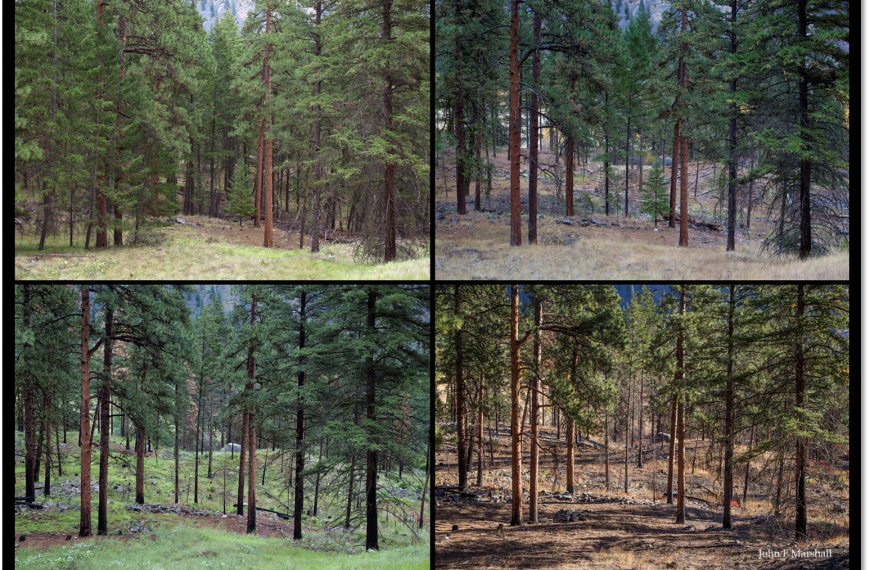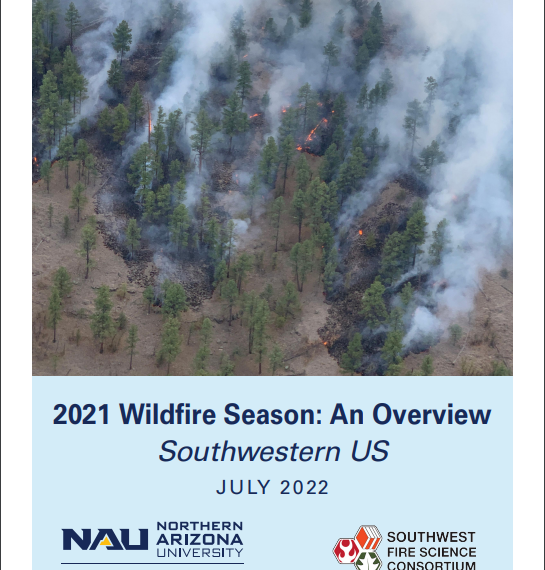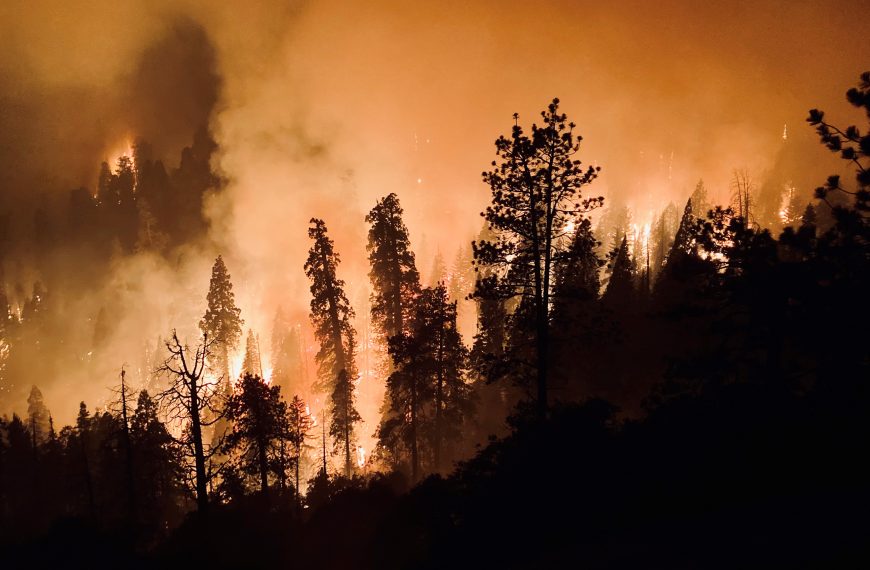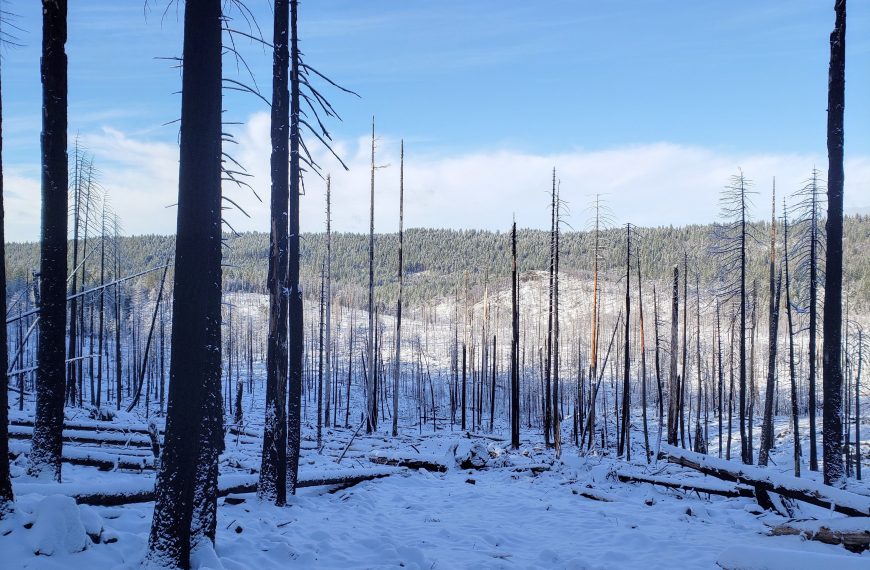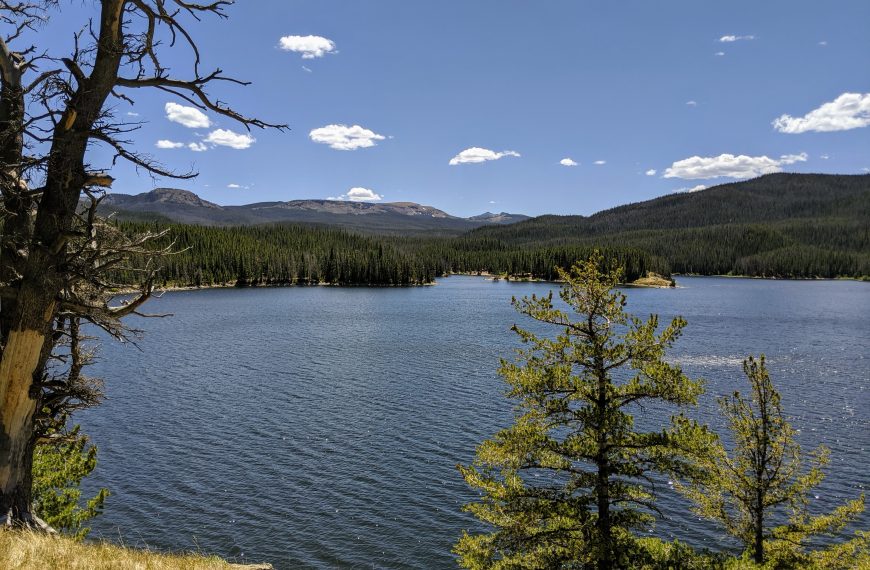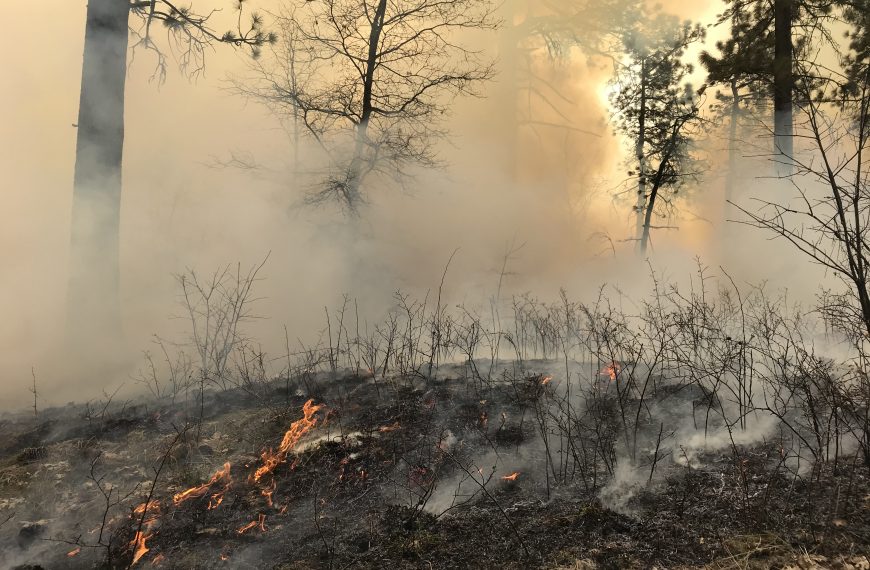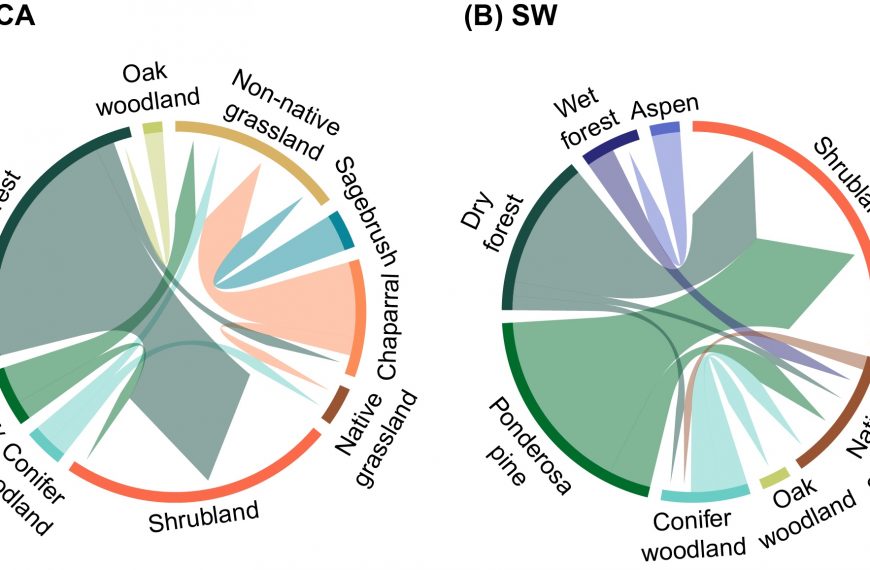For the past decade, the San Carlos Apache fire and forestry staff has been working to reintroduce fire to the landscape through an expanding prescribed fire and managed wildfire program. Stephen J. Pyne narrates this video describing the 2014 fire season on San Carlos when the new approach to fire was tested with the simultaneous management of multiple prescribed burns as well as a number of wildfire starts. One of those starts, the Skunk Fire eventually grew to over 73,000 acres.
Every Fire is an Opportunity to Treat a Landscape
On the afternoon of May 20, the Slide Fire was reported towards the south end of Oak Creek Canyon between Flagstaff and Sedona, Arizona. The canyon is steep and rugged – not the type of country that firefighters prefer for taking on a fire directly. After the initial threat to nearby homes passed, fire managers decided to use a confine-and-contain strategy, drawing a large box around the fire perimeter and using low-intensity burnout operations to rob the main head of the fire of fuel. This video describes the how fire officials managed the Slide Fire, and how the chosen tactics lessened negative impacts to the forest and watershed while providing for the safety of the more than 1,200 firefighters working the fire. The indirect tactics used on the Slide Fire are part of a national trend, wildfires being managed in ways that can benefit the landscape even while actively accomplishing suppression and protection objectives. National and regional fire experts discuss these changing trends and how fire management can be further improved to lessen negative impacts and actually create benefits for ecosystems.
Click here for an accompanying “Every fire is an opportunity” write up containing more detail.
The Fire Laboratory: Forest Restoration on the Gila
Vast stands of ponderosa pine stretch across the Gila National Forest, a testament to the role of fire in this corner of the Southwest. For decades, fire managers on the Gila have been reintroducing fire back on to the landscape. This video introduces some of the people behind the story of fire on the Gila National Forest.
Click here for accompanying “The Fire Laboratory” write up containing more detail.
Related Content
Past Meets the Present: Using Old Burns in Fire Management
Over the past two decades the size of wildfires has dramatically increased across the Southwest. These large burned areas have become so common that newer wildfires are burning into and around them. Fire managers increasingly use these previous burns as treatments that either stop or slow fire spread. The interaction of past and current wildfires has important management and ecological consequences.
Click here for accompanying “Past meets the present” write up containing more detail.
Related Content
Mastication Treatments in Southwestern Forests
Video describing mastication fuel treatments in the Southwest. Covers treatment effectiveness during recent large wildfires and also describes the benefits and potential drawbacks of mastication fuel treatments.
Click here for accompanying “Mastication” write up containing more detail.
Managing Wildfire: Blazing the Trail in the Southwest
Recent changes in federal fire management policy have given fire managers increased flexibility to manage wildfires for multiple objectives. Fire managers can allow one flank of a fire to continue burning through remote backcountry, while actively suppressing another flank that threatens homes, infrastructure, or other values. Fire managers across the Southwest discuss the benefits of the new policy and the continuing challenges of managing fire.
Click here for accompanying “Managing Wildfire” write up containing more detail.
Related Content
Buffelgrass: Southern Arizona Fights Back
The ecological and economic threat that buffelgrass poses to the community of Tucson and the surrounding area has sparked an unprecedented level of cooperation among land managers, nonprofits, government at all levels, and representatives from the business community. The Southern Arizona Buffelgrass Coordination Center represents a model of cross-‐jurisdiction cooperation and community engagement in response to an environmental threat.
Click here for accompanying “Buffelgrass” write up containing more detail.


